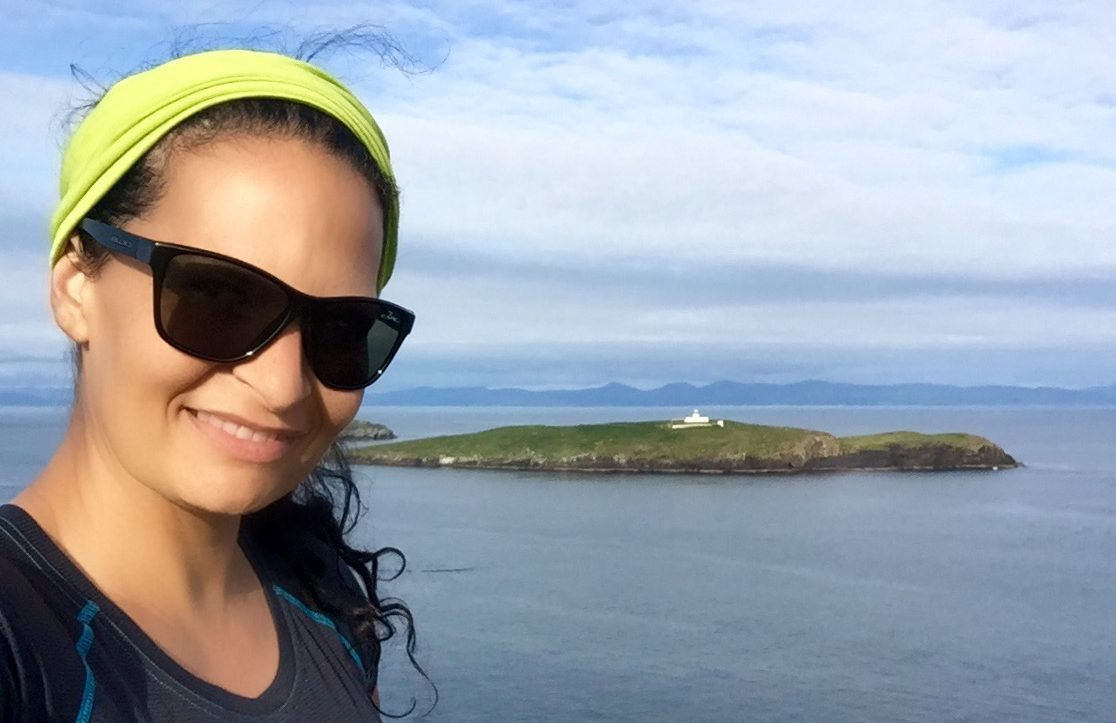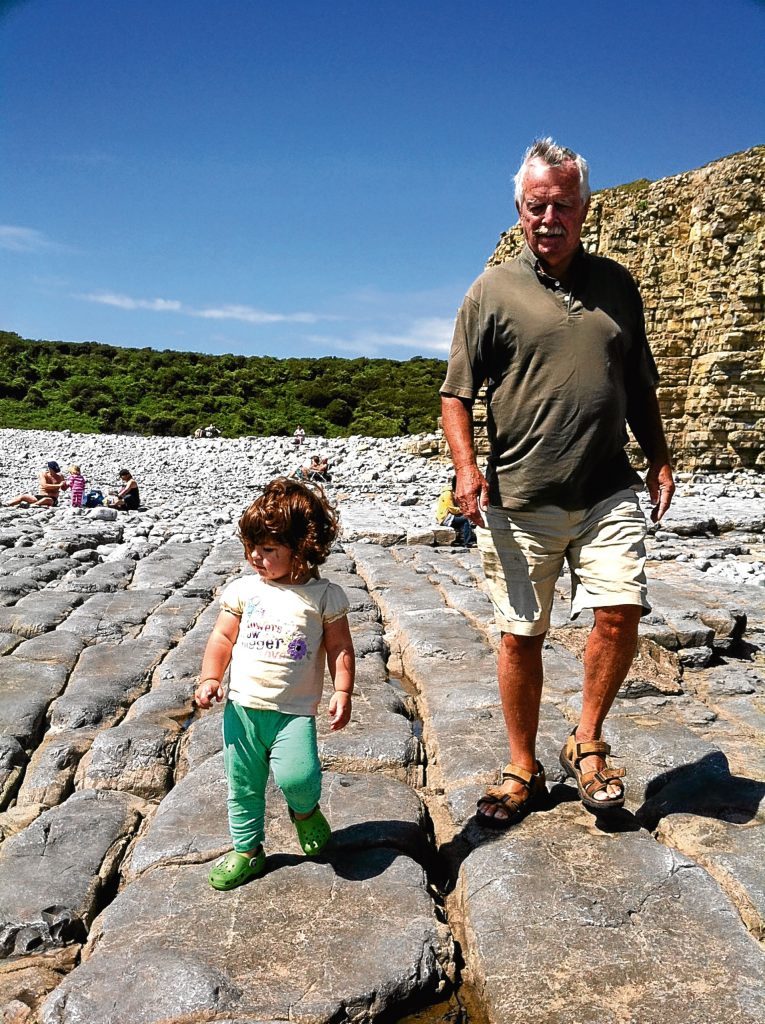
JOURNALIST and broadcaster Siriol Griffiths has spent five months circumnavigating her native Wales on foot.
Siriol, who’s from Cardiff, walked 1,200 miles and climbed 100,000 feet.
She was raising funds for Pancreatic Cancer UK, and promoting awareness of the disease that took her dad, Brian, in 2012.
“I have to be honest and admit I didn’t know anything about pancreatic cancer,” says Siriol.
“The average person knows cancer can affect different parts of the body and with, say, breast cancer everyone knows where your breasts are and what they do, and it’s the same with the lungs and brain.
“But most people don’t even know where their pancreas is and what it does — it’s one of those things you can’t see or self-check.
“So when I heard ‘pancreatic cancer’ I knew nothing.
“My mum did, though, and when she heard the diagnosis she almost collapsed.
“I started to read up on it, and learned more from taking my dad back and forth to the appointments.
“At first, my dad was misdiagnosed,” reveals Siriol.
“He went to the doctor and said he was feeling weak.
“It sounds so vague when you say it, because it could be anything — you haven’t eaten enough, you’re tired, too much exercise — and I understand why it escapes so many doctors.
“So the doctor said it was just a virus and that he had nothing to worry about. They did a blood test which picked up nothing.
“But back in 2004, my dad got a new valve on his heart and every year since, he’d gone in for a check-up.
“He got to know the cardiologist and he said my dad wasn’t looking too good, and when he told him he had a virus, he asked: ‘What virus? Do you want me to do an ultrasound right now?’
“My dad being my dad didn’t want to be any trouble, but the doctor insisted and they found a mass in the stomach area.
“So then he got the whole rigmarole of CT scans and biopsies — though they actually biopsied the wrong organ first time round.
“When you speak to pancreatic cancer patients or their carers, it’s the same thing every time.
“There’s always a misdiagnosis, or a mistake — it’s just so common.
“With my dad, his symptoms started in October, 2011, it was the middle of the following June when he got his diagnosis, and he passed away on the fifth of August — just six weeks later.
“That’s incredibly typical,” Siriol explains.
“They call pancreatic cancer the ‘silent killer’ for a reason, because so often, the minute you feel symptoms, you’re already dead.
“The diagnosis is usually a death sentence.
“At that meeting with the specialist it was just: ‘Sorry, we can’t do anything, we can only refer you to the palliative care team now.’
“I just said: ‘What are you talking about?’
“It was only a couple of years after the Welsh footballer John Hartson had been diagnosed with testicular cancer.
“It had spread to his brain and lungs, and he was so ill with pneumonia.
“I remember saying to the specialist: ‘What do you mean palliative care? Why aren’t you giving him chemotherapy or any of these amazing things you can do?
“‘What about John Hartson — he’s still alive!’
“But they just said: ‘Sorry, it’s pancreatic cancer — there’s nothing we can do.’
“When I looked at the statistics I understood,” adds Siriol.
“Only 5% are still alive after five years, and that hasn’t improved in decades.
“The research and understanding just isn’t there, and part of that is the window between diagnosis and dying being so small.
“I can’t verbalise how shocking that is.
“One minute you’ve got your dad who’s been there all your life, and within a week you’ve got somebody who looks like they’ve been pulled out of a concentration camp.
“That’s how stark it is.
“My dad looked like a skeleton with his skin pulled taut across his bones.
“I think some people even suffer post-traumatic stress after it, because you cannot believe the devastation it wreaks on the human body.”
Find out more about Siriol’s walk – visit http://www.siriol.com/
READ MORE
Family and a secret diary keeps unstoppable mum with terminal cancer going
Insisting on a check-up for pancreatic cancer may have saved Andy’s life

Enjoy the convenience of having The Sunday Post delivered as a digital ePaper straight to your smartphone, tablet or computer.
Subscribe for only £5.49 a month and enjoy all the benefits of the printed paper as a digital replica.
Subscribe